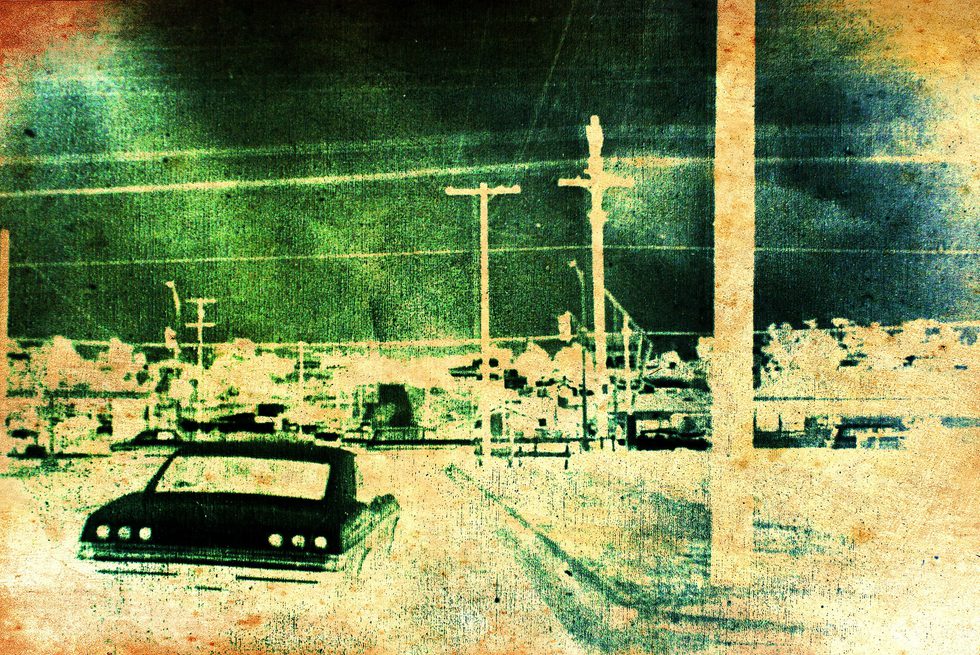Disaster: Translation
From the Series: Disaster
From the Series: Disaster

My translation of Ben McMahan's provocation is, simply, that translation is a helpful analytical tool to think with disaster. A sociology of translations, pace Michel Callon (1986), would encourage us to think about power relationships as our naturecultures, move, get reshaped, and take form. Translation gives primacy to the processual. It invites us to look at particular silences, articulations, and complexities to social and natural phenomena. I too, like other researchers, see disasters as processual. They overflow their own categorical definitions. They morph and move across different spaces and times, persisting in different forms, despite attempts to contain, manage, foreclose, and settle them. What, exactly, disaster is, can be, and would be, emerges through a series of possible translations.
Disasters, then, are multiple. That is, for me, multiplicity is a way to think of disaster and its aftermaths in its different possible articulations, emergences, and translations contemporaneously, to recognize the variety of orders, logics, frames, styles, mutations, experiences of disaster that relate to each other, mediate, and transform each other, that perhaps fit together neatly or, as I think we tend to find, contradict each other. Thinking the disaster as multiple, then, avoids breaking things down into dichotomies like natural and cultural, or simplifications of cause and effect. Rather it is to start with the messy (see Law 2004) matters of life. Disasters are a tangle of partial and “potential connections, emerging in disparate scenes, in incommensurate forms and registers” (Stewart 2007, 4).
This, indeed, poses a challenge to those who study disasters: a challenge to follow disasters as they move, to remain attentive to their many facets and dimensionalities.
McMahan asks:
In this way, I wonder what might be gained with a more granular (read: ethnographic) understanding of disaster? How do we accomplish such a fine-grained view (and without fetishizing or sensationalizing the human tragedy linked to these disasters?
To push the question still further: What kind of fine-grained view do we seek to accomplish? Which view do we seek to accomplish? How do we write disaster?
Translation also has multiple valences. Disasters already are processual translations, so our task as anthropologists ostensibly include how to relay those translations, but also, literally, translating disaster into various ethnographic forms. We are in the difficult position of translating subjects, objects, experiences—data, that is—into a fine-grained ethnographic form, if not without fetishizing or sensationalizing, then at least being mindful of the effects of these tendencies.
The disaster, as Maurice Blanchot (1995) has so incisively and difficultly pointed out, is what cannot be written. Yet we still can’t not write of the disaster.
My own challenge in writing disaster attempts to deal with its spectacular scale—its nearly fetishized presence—and the ordinariness of its constant presence. A little context: I examine the ways in which the 2004 Indian Ocean tsunami and the decades-long civil war come together as disasters of two types, and yet treated similarly as threats to security of the Sri Lankan nation. In particular, I trace the emergence of systems of governance and disaster management policies after the tsunami ravaged Sri Lanka’s coastlines and how these practices articulate with the conflict and the Sri Lankan government’s policies against terrorism, specifically the nationalist insurgent group the Liberation Tigers of Tamil Eelam. Undergirding these new systems of governance is a logic that treats natural disasters and so-called acts of terrorism as seemingly inevitable events that need to be prepared for and managed ahead of time. Through ethnographic detail, I show how this logic was also used as a moral justification for increased militarism and securitization of areas of Sri Lanka, in turn leading to a palpable lack of social and political change. Indeed, a violent peace is not a contradiction in Sri Lanka: it is a lived reality. In such a climate of insecurity, the ever possible threat of another natural disaster or outbreak of war-related violence hovers over daily life. My struggle has been to maintain a tension between this seemingly overdetermined and generative state effect and its negotiations. I ask: What happens when something drastic and major such as war, catastrophe, and death interrupts the everyday? What happens when the drastic, the unnamed, the unimagined are woven into the fabric of the mundane? Is it possible to locate a tension between fetishizing those possibilities, while also negotiating them as part and parcel and therefore normal aspects of life? This is my attempt to bring together the heterogeneous experiences and modalities of living in, with, and after disaster. Upturned wells, military checkpoints, broken foundations of home, decapitated palmyrah trees: in those places I look for the complexly layered detritus of disasters and the intensities of enduring them, the multiplicities of disaster. Such is my attempt at a fine-grained analysis.
By way of conclusion, but in no way foreclosing the conversation on disaster, I recall Blanchot's (1995, 38) invitation: "Write in order not simply to destroy, in order not simply to conserve, in order not to transmit; write in the thrall of the impossible real, that share of disaster wherein every reality, safe and sound, sinks."
Blanchot, Maurice. 1995. The Writing of the Disaster. Translated by Ann Smock. Lincoln: University of Nebraska Press. Originally published in 1980.
Callon, Michel. 1986. "Some Elements of a Sociology of Translation: Domestication of the Scallops and the Fishermen of St Brieuc Bay." In Power, Action, and Belief: A New Sociology of Knowledge, edited by John Law, 196–233. New York: Routledge and Kegan Paul.
Law, John. 2004. After Method: Mess in Social Science Research. New York: Routledge.
Stewart, Kathleen. 2007. Ordinary Affects. Durham, N.C.: Duke University Press.